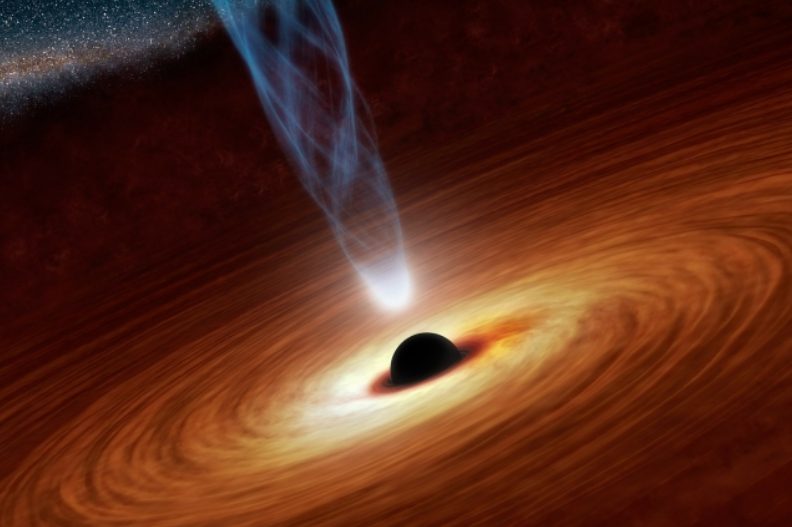
We may have solved the black hole paradox of Stephen Hawking
The collapse of matter into the black hole would leave an imprint in the gravitational field of the black hole itself, forming a “quantum hair”.
What happens to the matter that has been sucked into the black hole? Significant progress has been made in solving the black hole information paradox, one of the most famous dilemmas of modern science, from an international research team that, in two new scientific papers, presented a new solution that makes it possible to determine the mechanism by which the physical information of collapsing matter will be stored instead of “disappearing” in the black hole Himself. The paradox, first formulated in 1976 at the suggestion of Stephen Hawking, is that absolute loss of information is not allowed by quantum physics, posing a problem that scientists around the world have been grappling with since, nearly half a century. .
Quantum poetry solves the black hole paradox
In the first article published in the magazine physical examination lettersProfessor Xavier Calmet and doctoral student Folkert Kuipers from the University of Sussex, UK, Professor Stephen Hsu from Michigan State University in the US, Professor Roberto Casadio from the Department of Physics and Astronomy “Augusto Righi” from the University of Bologna and the National Institute of Nuclear Physics in the Emilia capital showed, That black holes are more complex than expected, because they have a gravitational field which, at the quantum level, encodes information about their training.
This additional feature, called a “gravitational-derived quantum hair”, has been demonstrated using complex mathematical methods that show how, given quantum gravity corrections, matter collapsing into a black hole leaves an imprint in the gravitational field of the black hole itself, precisely forming a “quantum hair” .
In particular, the researchers compared the gravitational fields of two stars of equal radius and total mass, but in which matter they are distributed differently within them. For classical physics, the two stars would have the same gravitational potential, but on a quantum level, this potential would depend on their internal composition. Thus, after collapsing into black holes, gravitational fields will retain the memory of how stars are formed internally, that is, they will have “whiskers” capable of revealing information and collapsing matter.
” One important aspect to consider is that black holes are formed by the collapse of compact objects – Professor Casadio explained in a note -. This means, according to quantum theory, that there is no absolute separation between the inside and the outside of a black hole. However, the state of matter collapsing and forming a black hole continues to influence the black hole’s external state, albeit in a manner consistent with current experimental limits. This is the phenomenon we call quantitative poetry“.
In the second article published in the magazine Physics Letters BProfessor Calmette and Professor Hsu explain how a black hole’s informational paradox can be resolved with this “quantum poetry” – due to the emission of thermal radiation through which black holes destroy information about what they present in shapes. As noted, such a phenomenon violates a fundamental law of quantum mechanics, which is that any process is mathematically reversible.
Thanks to “quantum poetry”, it is possible to determine the mechanism by which information is stored inside the black hole. ” black hole information – Scientists say – It spreads over many branches of the final state of radiation, and the macroscopic superpositions of various geometries of time and space play a role in the evaporation (the radiation emitted by the black hole, NB) “.
” Some difficulties in resolving the contradiction – The academics concluded – It may stem from a reluctance to accept these aspects of quantum dynamicsTherefore, the paradox was formulated on the basis of a semi-classical static geometry They describe only a small subset of the evaporative space and do not exclude the total unit.”
-
A Brief History of Time: The Great Theories of the Universe: From the Big Bang to Black Holes
-
Black holes and temporal distortions: Einstein’s sulfur legacy

“Organizer. Social media geek. General communicator. Bacon scholar. Proud pop culture trailblazer.”
